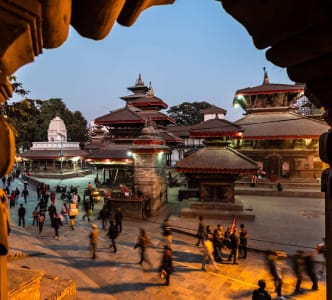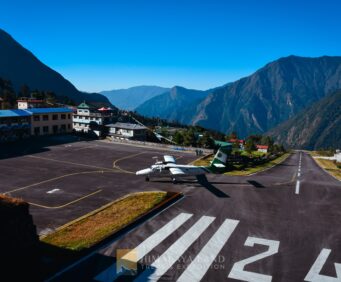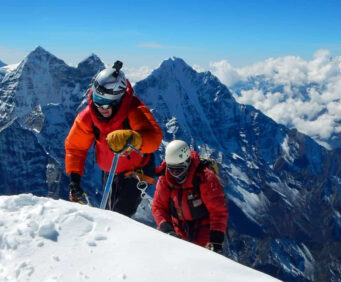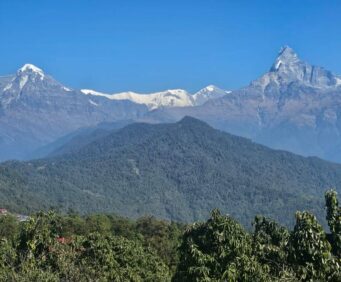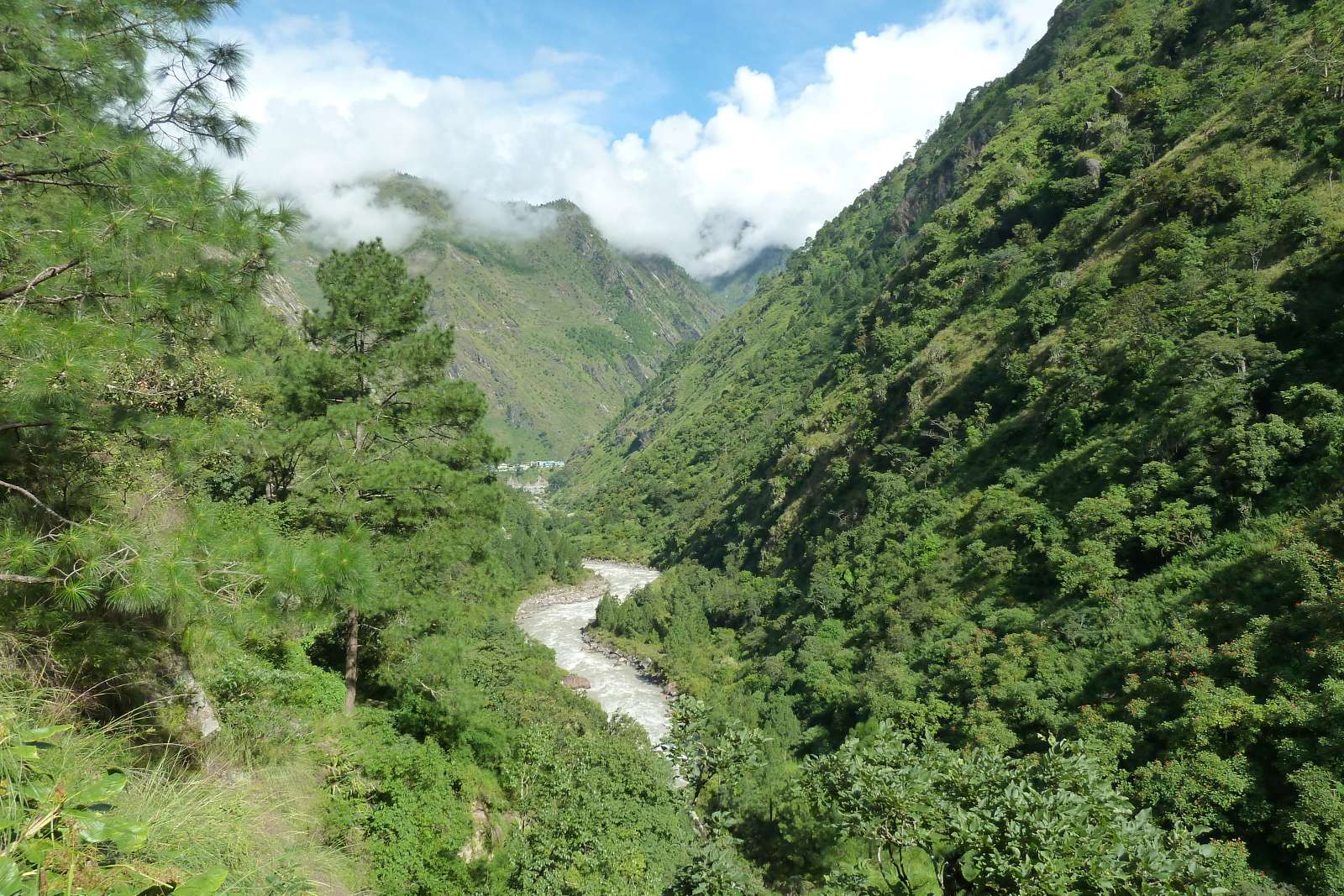
Langtang Valley Trek Difficulties in Monsoon
7th July, 2024 - Posted By: Himalayan AbodeLangtang Valley is Located in Central Nepal. The Langtang Valley Trekking is one of the most interesting treks any involved trekker would wish to pursue while in Nepal. Famous for lush green terrains, rich biosphere, and colorful denizens. Langtang Valley holds everything in a traveler’s way – thrill and calmness. It aims to discover the main features of the Langtang, the highlights and the preferable period for implementing them, the possibilities of cultural immersion, and some important recommendations for an exciting journey. Here, we discuss the Langtang Valley trek difficulties or challenges during the monsoon season.
Learn about potential difficulties such as heavy rainfall, landslides, and slippery trails, and get tips on how to prepare for a safe and successful trek.
Some of the Most Attractive characteristics of the Langtang Valley Trek are:
- Breathtaking Scenery: The trek has several landscapes of peaks of Langtang including Langtang Lirung (7,227m), Ganesh Himal (7,422m), Dorje Lakpa (6,966m). On the sides of the Valley, Let there be flowery and fascinating woods, alpine tablelands, and auspices waterfalls.
- Rich Biodiversity: The first of the Nepalese Himalayan national parks, the Langtang National Park has a rich biosphere with many species of flora and fauna. They will have sightseeing opportunities for things such as red pandas, Himalayan black bears, and several types of birds.
- Cultural Immersion: The majority of the population located in the region are from the Tamang ethnic group which has retained their unique culture of ancient Tibetan origin. You can freely walk around the local villages, monasteries, and stupas, thus getting acquainted with the customs and traditions.
- Kyanjin Gompa: As you will agree with me, Kyanjin Gompa which is a monastery at 3,870 meters above sea level is one of the treasures of the trek. This place is rather beautiful with nice views and rather easy trails to other nearby tops and glaciers.
- Accessible Yet Less Crowded: This particular trekking area in Nepal is not as popular as some of the others and therefore many fewer trekkers hike in the Langtang Valley.
Best Time to Go for Langtang Valley
The best times to go to Langtang Valley include the following; early March to the middle of May, and September to November. These periods provide favorable conditions such as moderate weather, less precipitation, and hence a favorable climate. The winter also ushers in the blooming of rhododendrons and in spring, new colors are added to the beautiful scenery.
Still, it is recommended to make the Langtang Valley Trek during the spring season from March to May and the autumn season from September to November.
These periods seem relatively accurate or have good climatic conditions, low precipitation, and generally good temperatures which make the trekking more secure and enjoyable.
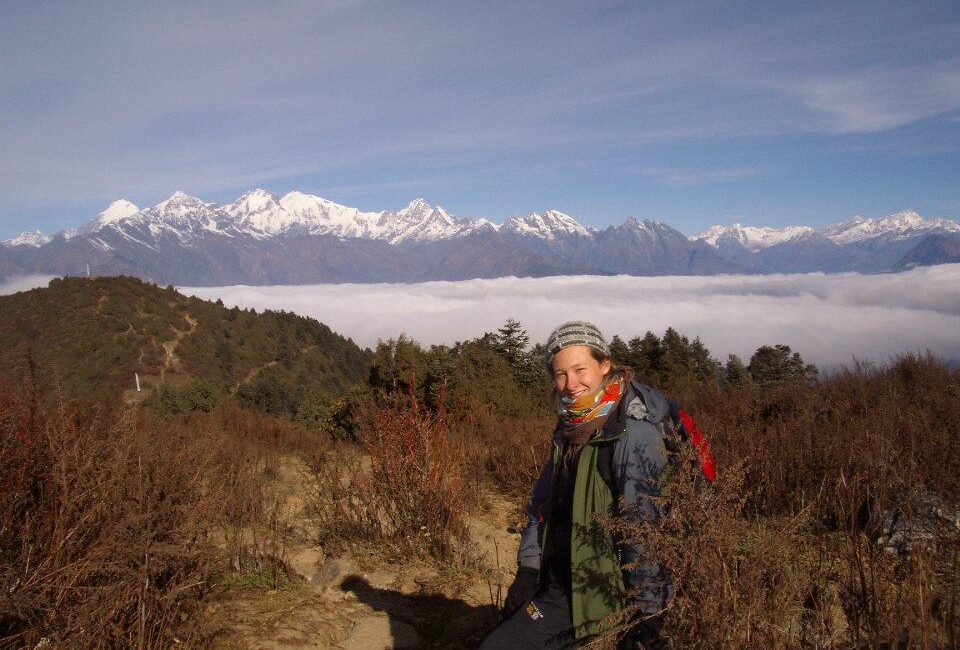
Following are the specific times for the trek. Seasonally Appropriate
Spring (March to May):
Weather: March is the best time for trekking in Langtang Valley as with the other months of spring the climate is relatively moderate and quite favorable for the trip. It is usually warm during the day; temperatures can range between 10 to 20 C / 50 to 68 F in the lowland area, but nights can be cold.
Scenery: It is beautiful during this season because there are grown-up rhododendron trees and they start flowering during this period. The sky is clear and allows on to see the snowy mountains.
Wildlife: Wildlife lovers should also consider going out during spring, as the animals are more so much visible after the cold season.
Autumn (September to November):
Weather: Trekking can also be done in autumn when the sky is clear and a little cooler than summer. It will be cool with daytime temperatures ranging from 10°C to 20°C (50°F to 68°F) along the lowland areas but will be colder in the highland areas, especially at night.
Visibility: This season is characterized by better visibility; thus, it is the most preferred season by photographers as well as those who have the desire to have a clear view of the Himalayas.
Festivals: Autumn months also come with a cultural side for the trekkers because it is the festival season in Nepal including two major festivals of Dashain and Tihar.
Depending on the period of the year interested in traveling/visa, the monsoon season is from June to August and the winter season is from December to February.
Monsoon Season:
This area experiences a vulnerable climate most especially in the rainy season, June-August when trails are slippery and prone to landslides. The climate is characterized and rather humid, frequently the views are shrouded by clouds and the number of blood-sucking leeches can be quite high.
Winter Season:
The best and the worst seasons to visit the Langtang Valley: The best time would be during March to May, and September to November, while the worst time would be during December, January, and February because the climate is very cold and there would be heavy snowfall, especially at the higher regions.
Even though the sky is usually sunny, there is a distinct lack of heat as well as the paths are covered by snow, due to which it can be troublesome to hike and one needs additional equipment.
Trekking Route and Itinerary
As with every other valley trek, a normal trek to Langtang Valley usually takes 10-12 days. Here is a sample itinerary:
Here is an outline itinerary:
Day 1: Starting the motor vehicle transport from Kathmandu to Syabrubesi which is situated at 1,550 meters altitude.
Day 2: The trekking of the day will be from Syabrubesi to Lama Hotel which is at an altitude of 2,380 meters.
Day 3: Lama Hotel to Langtang Village Trek (5,100 feet to 11,200 feet)
Day 4: Trek from Langtang Village to Kyanjin Gompa is 2 hours to 3 hours beautiful walk over a distance of 9 kilometers to reach 3,870 meters.
Day 5: Acclimatization day at Kyanjin Monastery (can also do a side trip to Tserko or Kyanjin Ri)
Day 6: Retrace back the same track from Kyanjin Gompa to Lama Hotel.
Day 7: Lama Hotel to Syabrubesi Trek
Day 8: Return to Kathmandu.
Cultural Experiences
- Traditional Tamang Villages: Socialize with the indigenous inhabitants of the Tamang community and also enjoy the generosity of the community’s hospitality.
- Local Cuisine: Tantalise your palate with authentic Nepalese cuisine; Dal Bhat (boiled rice accompanied with lentils), momo (Nepalese version of dumplings), and Thukpa (soup prepared with noodles).
- Festivals: If your trek is planned during some of the festivals such as Losar- the Tibetan New Year or Buddha Jayanti- the birthday of Lord Buddha, some cultural dances and festivities are performed.
Practical Tips
- Permits: Langtang National Park entry permit and a TIMS (Trekkers’ Information Management System) card are required for the trekkers.
- Accommodation: Facilities you are most likely to find include simple but clean tea houses and lodges that offer meals and a haven for the night.
- Physical Preparation: However, it should be noted that the Langtang Valley trekking is moderate though some measure of hiking preparations still holds. Doing cardio exercises and practice hiking can do.
- Altitude Sickness: It is recommended to stay at the mountain for several days or at least to arrive a day before the actual hike to get used to the higher altitude and not get afflicted by altitude sickness. Climb gradually, drink enough water, and remember the key signals of the body.
Langtang Valley Trek Difficulties/Challenges during the Monsoon
However, this being a trek up the Langtang Valley, it is not without its share of difficulties. By realizing these challenges, the trekkers will be able to prepare themselves better and reduce the risk relating to it all making the experience safer and enjoyable. Here are some of the key challenges:
1. Altitude and Acclimatization
- Altitude Sickness: As the trek ascends to elevations over 3,800 meters (12,500 feet), there’s a risk of Acute Mountain Sickness (AMS). Symptoms can include headaches, nausea, dizziness, and shortness of breath. Proper acclimatization is crucial.
- Gradual Ascent: It’s important to ascend slowly to allow your body to adjust to the altitude. Including acclimatization days in your itinerary, such as a rest day at Kyanjin Gompa, is highly recommended.
2. Physical Fitness and Endurance
- Physical Demands: The trek involves long days of walking, often on uneven and steep terrain. Trekkers need a good level of fitness and endurance to handle the daily hiking distances and elevation gains.
- Preparation: Prior physical preparation, including cardiovascular exercises, strength training, and practice hikes, can significantly help in managing the trek’s demands.
3. Weather Conditions
- Unpredictable Weather: Mountain weather can be unpredictable, with sudden changes. Trekkers need to be prepared for a range of conditions, from warm sunny days to cold, windy, and potentially snowy weather at higher altitudes. Weather conditions are major key factor for Langtang Valley Trek difficulties.
- Seasonal Challenges: Monsoon season (June to August) brings heavy rain, making trails slippery and increasing the risk of landslides. Winter (December to February) brings extreme cold and snow, requiring more gear and preparation.
4. Terrain and Trail Conditions
- Rugged Trails: The paths can be rocky, steep, and uneven, requiring careful footing. There are also several river crossings, which can be challenging, especially during the monsoon.
- Remote Areas: Some parts of the trek are quite remote, with limited access to medical facilities or rescue services in case of emergencies.
5. Limited Facilities
- Basic Accommodation: While there are tea houses and lodges along the route, the facilities are basic. Rooms are often shared, and bathrooms may be communal and unheated.
- Limited Menu: The food options are typically limited to local cuisine, and availability can decrease as you go higher. Dietary preferences might not always be accommodated.
6. Health and Hygiene
- Water Safety: Drinking untreated water can lead to waterborne illnesses. Trekkers should carry water purification tablets or filters.
- Hygiene: Maintaining personal hygiene can be challenging due to limited washing facilities. Hand sanitizers and wet wipes are essential items to carry.
7. Communication and Connectivity
- Limited Connectivity: Mobile network coverage is intermittent, especially at higher altitudes. Internet access, where available, can be slow and unreliable.
- Isolation: The remoteness can also mean fewer opportunities for immediate assistance or communication with the outside world.
Conclusion
The Langtang Valley Trek, while accessible and less crowded than some other popular treks in Nepal, requires careful planning and preparation. Trekkers should be ready for the physical and mental demands of the journey, equipped with proper gear, and mindful of the altitude.
With the right preparation and mindset, the challenges of the Langtang Valley Trek difficulties can be managed, allowing trekkers to fully appreciate the stunning landscapes and rich cultural experiences the region offers.
Recent Posts
